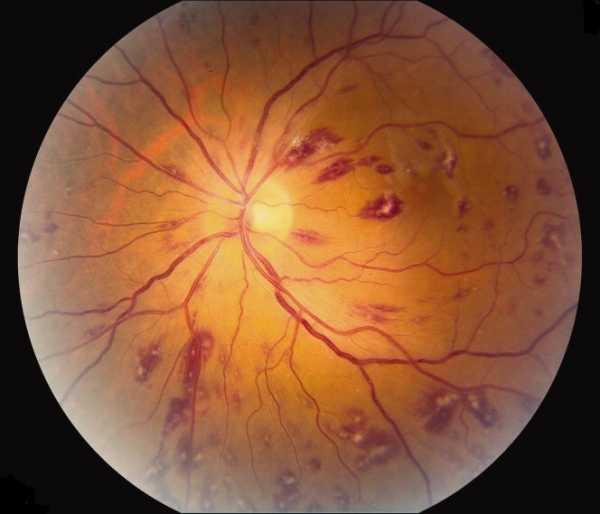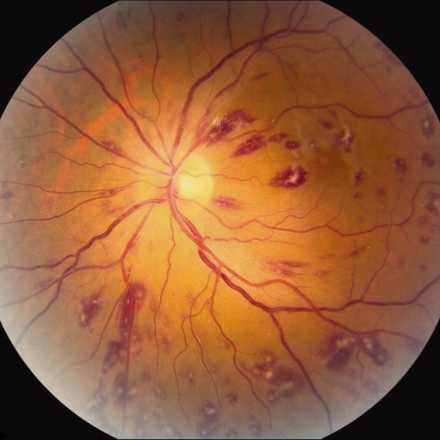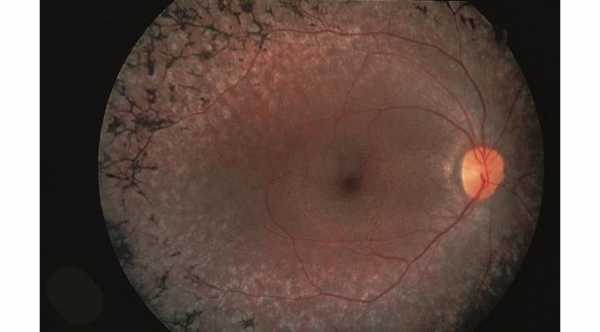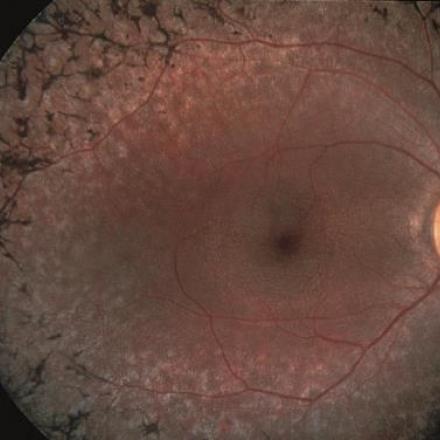
Ophthalmology Terminology R
Radial Keratotomy. Type of the refractive surgery in which small multiple deep incisions are made in the cornea in order to change the shape of the cornea.It is used to correct myopia up to 5.00 Diaptors
Radiation Cataract
Radiation Retinopathy. Retinal changes that occur after exposure to external beam radiation for treatment of tumors of the eye, orbit or brain.
Reese-ellworth Classification of Retinoblastoma. Classification that is related to the visual prognosis for patients with retinoblastoma and it is based on size, number, location of the tumor and whether or not the vitreous is involved.
Refractive Surgery. Surgery that is done on the eye to correct the refractive errors such as myopia, hyperopia and astigmatism.
Refresh Tears
Refsum Disease. Type of inborn error of metabolism that occurs due to deficiency of phytanic acid 2 hydroxylase. This will cause phytanic acid to accumulate in the body and tissue. This syndrome has ocular and systemic manifestations. Ocular manifestations are prominent corneal nerve and retinitis pigmentosa like picture of the retina.
Reis-Buckler’s Syndrome. Type of corneal dystrophy that affects the bowman membrane of the cornea. It is characterized by painful recurrent corneal erosions.
Relative Afferent Papillary Defect. A defect in pupillary light reflex when light swing from one eye to another. Both pupils are constricted when the light switch from normal eye to abnormal one but both pupils will dilute when the light switch from abnormal to normal.It occurs in patients with optic nerve damage.
Retinal Breaks. Tear that occur through the retinal layers which can be either partial or full thickness.If left untreated, it can cause retinal detachment.
Retinal Detachment
Retinal Dystrophy. Group of genetically disorders that involves the retina and it is either isolated and occurs in normal individual or occurs in association with systemic abnormalities.
Retinal Pigment Epithelial layer. A layer of pigmented cells that lies between the choroid and the retina. It nourishes the photoreceptors layer of the retina. Atrophy of this layer can cause loss of photoreceptors cells of the retina.
Retinitis Pigmentosa. A condition which affects the peripheral vision first and causes night blindness. It is a disease of the photoreceptor cells especially rods cells which are responsible for night and peripheral vision but with time cells that are responsible for day and central vision(cones cells) will be affected.
Retinoblastoma. It is a tumor of the primative retinal cells and it is the most common primary malignant intraocular tumor of childhood.
Retinocytoma. A benign form of retinoblastoma.
Retinopathy of Prematurity. Retinal changes that occur in babies who are premature and with low birth weight. This condition characterized by ischemic areas of the retina which are not supplied by retinal blood vessels which can cause multiple complications that can lead to retinal detachment.
Retinoschisis. A condition which can be misdiagnosed as retinal detachment. The retina is attached to the underlying layer but there is splitting within the retinal layers usually at the level of outer plexiform layer.It can cause symptomatic loss of vision if occurs on the macula while it can be asymptomatic if occurs outside this area.
Retrolental Fibroplasia. A condition in which the retina is avascularized with formation of scar and fibrous tissue. This scar will cause retinal detachment. It is called retrolental because this fibrotic retina will collapse behind the natural lens as a white opaque membrane.The most common cause of is retinopathy of prematurity.
Rhadomyosarcoma. A tumor of the connective tissue that has the capacity to differentiate towards muscle and it is the most common primary malignant tumor that involves the orbit in children.
Rhegmatogenous Retinal Detachment
Riddoch Phenomenon. A phenomenon that occurs in patient with lesion to the visual occipital lobe of the brain. The patient will be able to see moving targets but can't be able to see stationary targets.
Rieger’s Anomaly. A condition that is characterized by posterior embryotoxon with iris hypoplasia, ectropion uveae and corectopia.
Rieger’s Syndrome. It is the same as Rieger’s Anomaly plus systemic manifestations such as dental and facial anomalies.
Rose Bengal Stain. A commonly used eye stain. It stains degenerated and dead cells. It also can stain mucous strands.
Roth’s spots. small retinal hemorrhages with white center. It mainly occurs in patients with infective endocarditis but also can occur in leukemic patients.
Rubeosis.Abnormal blood vessels that are formed on the iris due to ischemic changes in the eye. Severe form can cause hyphema and angle closure glaucoma which is difficult to treat.







